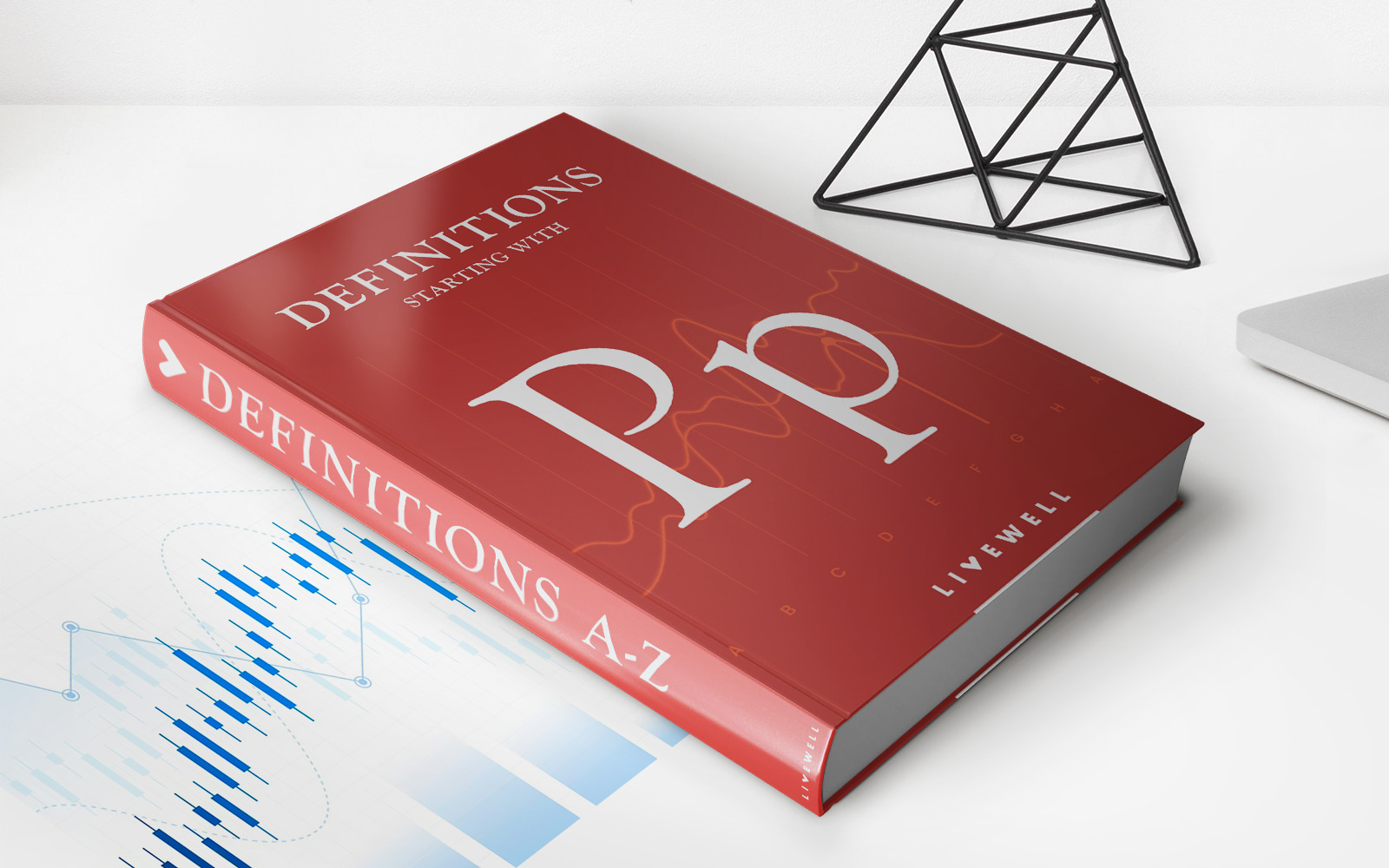Home>Finance>Who Pays First Auto Insurance Or Health Insurance


Finance
Who Pays First Auto Insurance Or Health Insurance
Published: October 6, 2023
Find out who pays first when it comes to auto insurance and health insurance. Understand the financial aspects and prioritize your coverage.
(Many of the links in this article redirect to a specific reviewed product. Your purchase of these products through affiliate links helps to generate commission for LiveWell, at no extra cost. Learn more)
Table of Contents
Introduction
When it comes to medical expenses resulting from an auto accident, figuring out who pays first can be a confusing process. The two main sources of coverage are auto insurance and health insurance, and determining which policy should take precedence can vary depending on the circumstances.
Understanding how auto insurance and health insurance work separately, as well as how they interact in the event of an accident, is crucial for individuals to navigate through the complexities of payment responsibilities. This article aims to shed light on the coordination of benefits between these two types of insurance and help clarify which one pays first.
Auto insurance is a policy that provides financial protection for the owner of the vehicle in the event of an accident or damage. The coverage typically includes liability coverage, which pays for injuries and property damage to others caused by the insured driver, as well as personal injury protection (PIP) or medical payments coverage (MedPay), which pays for the medical expenses of the insured.
On the other hand, health insurance is a policy that covers medical expenses for illnesses and injuries unrelated to car accidents. It is a broader form of coverage that includes doctor visits, hospitalizations, prescriptions, and other medical services.
When both auto insurance and health insurance policies are in place, there is a process called coordination of benefits to determine which policy is the primary payer. This process helps avoid duplicating payments and ensures that the combined coverage does not exceed the total cost of the medical expenses. The primary payer is responsible for paying first, while the secondary payer covers the remaining costs.
The determination of the primary payer is based on several factors, including state laws, policy terms, and the specific circumstances of the accident. In general, auto insurance is typically considered the primary payer for accident-related injuries, while health insurance serves as the secondary payer.
However, it’s essential to note that there can be exceptions to this general rule. Different states may have different laws dictating the coordination of benefits, and certain health insurance policies may include specific clauses that make them the primary payer in certain situations.
In the following sections, we will explore the scenarios where auto insurance serves as the primary payer and where health insurance takes precedence. Understanding these scenarios can help individuals navigate their insurance claims and ensure that the appropriate policy pays for their medical expenses.
Understanding Auto Insurance
Auto insurance is a type of insurance coverage that protects vehicle owners against financial loss in the event of an accident, theft, or damage to their vehicle. It is a legal requirement in most states and provides a range of coverage options to help drivers recover from accidents and minimize their financial liability.
Auto insurance policies typically include liability coverage, which pays for injuries and property damage to others caused by the insured driver. This coverage is crucial as it protects the driver from being personally responsible for costly medical bills, legal fees, and property repair or replacement.
In addition to liability coverage, auto insurance policies may also include personal injury protection (PIP) or medical payments coverage (MedPay). These coverages pay for the medical expenses of the insured driver and passengers involved in an accident, regardless of who is at fault. PIP and MedPay coverage can help cover medical bills, hospital stays, surgery, rehabilitation, and other related expenses.
Auto insurance policies also offer comprehensive and collision coverage. Comprehensive coverage protects against non-accident-related damage to the vehicle, such as theft, vandalism, or natural disasters. Collision coverage, on the other hand, pays for damages to the insured vehicle caused by a collision with another vehicle or object.
When it comes to auto insurance and healthcare expenses resulting from an accident, the coverage provided by auto insurance policies takes precedence over health insurance. In most cases, auto insurance is considered the primary payer for accident-related injuries. This means that if you have both auto insurance and health insurance, your auto insurance policy will be responsible for paying your medical bills resulting from the accident.
It’s important to note that auto insurance policies have coverage limits and deductibles that may apply. These limits determine the maximum amount the insurance company will pay for medical expenses, while the deductible is the amount the insured must pay out of pocket before the insurance coverage kicks in. Being aware of these limits and deductibles is crucial for understanding potential out-of-pocket costs and how they may be affected by other insurance policies.
Overall, understanding the coverage and terms of your auto insurance policy is vital when it comes to determining how medical expenses resulting from an accident will be paid. Consulting with your insurance provider and carefully reviewing your policy can help clarify your rights, obligations, and coverage limits in such situations.
Understanding Health Insurance
Health insurance is a type of insurance coverage that helps individuals pay for medical expenses. It provides protection against the high costs of healthcare services, including doctor visits, hospitalizations, prescriptions, and other healthcare-related expenses.
Health insurance policies can vary in terms of coverage, deductibles, premiums, and network restrictions. They are typically offered by employers, government programs, or purchased individually. The goal of health insurance is to ensure that individuals have access to necessary medical care without facing excessive financial burdens.
Health insurance policies generally include coverage for preventive care, such as vaccinations and screenings, as well as treatment for illnesses and injuries. This includes coverage for hospitalizations, surgeries, prescription medications, and specialized medical treatments.
When it comes to medical expenses resulting from an auto accident, health insurance is typically considered the secondary payer. This means that it kicks in after the auto insurance coverage has been exhausted. However, there are certain scenarios and circumstances where health insurance may be the primary payer.
It’s important to note that health insurance policies may have specific clauses or provisions that make them the primary payer in certain situations. Some health insurance policies may exclude coverage for injuries resulting from motor vehicle accidents, while others may have coordination of benefits clauses that determine when they become the primary or secondary payer.
Understanding the details of your health insurance policy is crucial for determining how medical expenses will be covered after an auto accident. It’s important to review the policy terms and consult with your insurance provider to determine your rights and obligations, as well as any coordination of benefits requirements.
Additionally, health insurance policies often involve deductibles, co-pays, and coinsurance amounts that individuals are responsible for paying out of pocket. These out-of-pocket costs can vary depending on the policy and the specific services received. Being aware of these costs and how they interact with other insurance coverage can help individuals plan and budget for any potential medical expenses following an accident.
Overall, health insurance provides critical financial protection for individuals by covering a wide range of medical expenses. When it comes to auto accidents, health insurance policies typically serve as the secondary payer, but it’s important to review the policy terms and coordination of benefits provisions to understand the specific coverage and payment responsibilities in such situations.
Coordination of Benefits
Coordination of benefits is a process that determines how multiple insurance policies interact to provide coverage and pay for medical expenses. It ensures that the combined benefits from different insurance policies do not exceed the total cost of the medical services received.
When it comes to auto insurance and health insurance, coordination of benefits becomes crucial in determining which policy should be the primary payer for medical expenses resulting from an auto accident. The goal is to avoid duplicate payments and ensure that each policy pays its fair share.
The coordination of benefits process involves several steps. The first step is to determine the order of coverage. In most cases, auto insurance is considered the primary payer for accident-related injuries, and health insurance is the secondary payer. However, there may be exceptions based on state laws and the specific terms of the insurance policies involved.
After the order of coverage is established, the next step is to determine the allowed amount for each policy. This is the maximum amount that each policy will pay for a specific service or medical expense. The allowed amount is based on the policy terms, coverage limits, and any deductibles or co-pays that may apply.
Once the allowed amounts are determined, the coordination of benefits process ensures that the total payment does not exceed the actual cost of the medical services. If the primary payer covers the entire cost, the secondary payer does not need to provide any additional payment. However, if the primary payer’s payment is less than the actual cost, the secondary payer may be responsible for covering the remaining balance up to the allowed amount.
It’s important to note that coordination of benefits requires active communication between the insurance companies involved and the insured individuals. Providing accurate and complete information about the insurance policies and medical services received is essential for ensuring accurate coordination of benefits and avoiding payment delays or disputes.
Overall, coordination of benefits is a critical process that determines how multiple insurance policies work together to cover medical expenses. In the context of auto insurance and health insurance, it helps determine which policy should be the primary payer for accident-related injuries. Understanding the coordination of benefits process and consulting with insurance providers can help individuals navigate the complexities of insurance claims and ensure that their medical expenses are appropriately covered.
Primary Payer Determination
When it comes to determining the primary payer for medical expenses resulting from an auto accident, several factors come into play. These include state laws, policy terms, and the specific circumstances of the accident.
In most cases, auto insurance is considered the primary payer for accident-related injuries. This means that if you have both auto insurance and health insurance, your auto insurance policy will be responsible for paying your medical bills resulting from the accident.
However, there are exceptions to this general rule. State laws may dictate different guidelines for determining the primary payer, and insurance policies may include specific clauses or provisions that make health insurance the primary payer in certain situations.
State laws regarding the coordination of benefits can vary, so it’s essential to understand the regulations in your specific jurisdiction. Some states follow the “no-fault” system, where each driver’s auto insurance policy pays for their medical expenses, regardless of who is at fault. In these states, auto insurance is typically the primary payer for accident-related injuries.
On the other hand, some states follow a “fault” system, where the at-fault driver’s auto insurance is responsible for covering the medical expenses of the injured party. In these cases, health insurance may serve as the primary payer if the at-fault driver’s auto insurance is insufficient to cover all the medical costs.
Regarding policy terms, it’s important to review the terms of both your auto insurance and health insurance policies to understand any specific provisions regarding primary payer determination. Some health insurance policies may include coordination of benefits clauses that determine when they become the primary or secondary payer. These clauses may depend on factors such as the type of accident or the type of coverage provided by the auto insurance policy.
In some instances, health insurance may be the primary payer if the auto insurance policy explicitly excludes coverage for injuries resulting from motor vehicle accidents. This can happen when the auto insurance policy only covers property damage or liability, rather than medical expenses.
It’s crucial to consult with your insurance providers and review the specific terms of your policies to understand the primary payer determination in your situation. Understanding these details can help individuals navigate the claims process and ensure that their medical expenses are appropriately covered.
In some cases, there may be disputes or delays in determining the primary payer. In such situations, it is recommended to seek legal advice or contact the insurance regulatory authority in your state for assistance.
Ultimately, determining the primary payer is a crucial step in ensuring that medical expenses resulting from an auto accident are properly covered. Understanding the factors involved and consulting with insurance providers can help individuals navigate the complexities of insurance claims and secure the necessary coverage for their medical expenses.
Auto Insurance as Primary Payer
Auto insurance is typically considered the primary payer for medical expenses resulting from an auto accident. This means that if you have both auto insurance and health insurance, your auto insurance policy will be responsible for paying your medical bills.
When auto insurance is the primary payer, it means that it takes precedence over health insurance in covering accident-related medical expenses. This is because auto insurance is specifically designed to provide coverage for injuries and damages resulting from car accidents.
If you are involved in an auto accident and sustain injuries, your auto insurance policy’s personal injury protection (PIP) or medical payments coverage (MedPay) will come into play. These coverages are designed to pay for medical expenses, regardless of who is at fault for the accident. They can help cover the costs of hospital visits, surgeries, medications, rehabilitation, and other accident-related medical services.
The benefit of auto insurance as the primary payer is that it is typically more straightforward and efficient to navigate in terms of payment for accident-related injuries. The claims process is streamlined, and the coverage is specific to car accidents, ensuring that medical expenses are promptly addressed.
Auto insurance policies have coverage limits and deductibles, which may affect the amount the insurance company will pay for medical expenses. It’s important to review your policy and understand these limits and deductibles to be aware of any potential out-of-pocket costs.
In addition, it’s crucial to keep in mind that auto insurance policies may have exclusions or limitations. These limitations may vary depending on the policy and the specific circumstances of the accident. For example, if the accident occurred while driving under the influence or engaging in illegal activities, the coverage may be affected. Consulting with your insurance provider and thoroughly reviewing your policy can help you understand the scope and limitations of your auto insurance coverage.
In summary, auto insurance serves as the primary payer for medical expenses resulting from an auto accident. Its specific coverage for accident-related injuries ensures a more straightforward claims process and efficient payment for medical expenses. Understanding the coverage limits and any policy exclusions will help you navigate the claims process and ensure adequate coverage for your medical expenses.
Health Insurance as Primary Payer
While auto insurance is typically considered the primary payer for accident-related injuries, there are situations where health insurance may serve as the primary payer instead. It’s important to understand these scenarios and the specific provisions of your health insurance policy.
In some cases, health insurance may become the primary payer when the auto insurance policy explicitly excludes coverage for injuries resulting from motor vehicle accidents. This can occur if the auto insurance policy only covers property damage or liability, rather than medical expenses. In such instances, health insurance steps in to cover the medical expenses resulting from the accident.
Health insurance may also be the primary payer if the at-fault driver’s auto insurance policy is insufficient to cover the entirety of the medical expenses. For example, if the auto insurance policy has low coverage limits or deductibles that have not been met, health insurance may become the primary source of coverage for the remaining costs.
Additionally, health insurance may be the primary payer if you do not have auto insurance or if you were injured in an accident where no other driver is at fault. In these situations, health insurance will be the primary source of coverage for your medical expenses.
When health insurance serves as the primary payer, it’s important to understand the coverage limits, deductibles, and out-of-pocket costs associated with your policy. Health insurance policies often have specific terms and conditions that determine the extent of coverage for different services and treatments.
It’s crucial to review your health insurance policy and consult with your insurance provider to understand how it will cover accident-related injuries. The coordination of benefits process will determine the portion of the expenses that health insurance will cover based on the allowed amounts and any deductibles or co-pays that may apply.
Understanding health insurance as the primary payer is essential for individuals who may not have auto insurance or whose auto insurance does not fully cover their medical expenses. It provides a safety net and ensures that individuals have access to necessary medical care in such situations.
It’s important to note that the primary payer determination can vary depending on state laws, policy terms, and the specific circumstances of the accident. Consulting with insurance providers, reviewing policy terms, and seeking legal advice if necessary can help individuals navigate the complexities of determining the primary payer for their medical expenses.
In summary, while auto insurance is typically the primary payer for accident-related injuries, there are scenarios where health insurance may serve as the primary payer instead. Understanding the specific provisions of your health insurance policy and consulting with your insurance provider will help you determine if health insurance will be the primary source of coverage for your medical expenses resulting from an accident.
Scenarios and Examples
Understanding how auto insurance and health insurance interact in various scenarios can help shed light on who the primary payer will be for accident-related medical expenses. Let’s explore a few common scenarios and examples:
- Scenario 1: You are at fault for a car accident that results in injuries to yourself and the other party involved. In this scenario, your auto insurance policy will be the primary payer for your medical expenses under the liability coverage. The other party’s health insurance may serve as the primary payer for their medical expenses. If your auto insurance coverage is insufficient to cover all the medical costs, your health insurance may become the secondary payer to cover the remaining balance.
- Scenario 2: You are involved in a car accident where the other party is at fault. In this case, the at-fault driver’s auto insurance policy will be the primary payer for your medical expenses. If the at-fault driver’s policy is insufficient to cover all your medical costs, your health insurance may become the secondary payer to cover the remaining balance. It’s important to note that some health insurance policies may require you to exhaust your auto insurance coverage before they become the primary payer.
- Scenario 3: You are involved in a hit-and-run accident, and the responsible party cannot be identified. In this scenario, if you have uninsured motorist coverage as part of your auto insurance policy, it will act as the primary payer for your medical expenses. If uninsured motorist coverage is not available, your health insurance will likely become the primary payer for your medical expenses.
- Example: Sarah is injured in a car accident where she is at fault. She has both auto insurance and health insurance. Her auto insurance policy includes personal injury protection (PIP) and liability coverage. In this case, Sarah’s auto insurance will be the primary payer for her medical expenses under the PIP coverage, up to the coverage limits and deductibles. If her PIP coverage is exhausted and there are additional medical expenses, her health insurance may become the secondary payer to cover the remaining balance, subject to her health insurance policy terms and coordination of benefits requirements.
These scenarios and examples illustrate the complexity and variability of primary payer determination. The specific circumstances, state laws, and policy terms will play a significant role in determining who the primary payer will be for accident-related medical expenses. It’s important to review your insurance policies and consult with your insurance providers to understand how your coverage applies to different scenarios.
By understanding these scenarios and examples, individuals can better grasp the dynamics between auto insurance and health insurance and ensure that their medical expenses are appropriately covered in the event of an accident.
Conclusion
Navigating the payment responsibilities for medical expenses resulting from auto accidents can be complex, but understanding the roles of auto insurance and health insurance can help streamline the process. Determining the primary payer and coordinating benefits between these two types of insurance policies is crucial for ensuring that medical expenses are covered appropriately.
In most cases, auto insurance is considered the primary payer for accident-related injuries, while health insurance serves as the secondary payer. Auto insurance policies, such as personal injury protection (PIP) or medical payments coverage (MedPay), are specifically designed to cover medical expenses resulting from car accidents.
However, there are scenarios where health insurance may become the primary payer. These situations can arise when the auto insurance policy explicitly excludes coverage for injuries from motor vehicle accidents, or if the at-fault driver’s auto insurance coverage is insufficient to cover all the medical costs.
The coordination of benefits process determines how these insurance policies work together to cover medical expenses, ensuring that the combined benefits do not exceed the total cost of the medical services received. Consulting with insurance providers, reviewing policy terms, and understanding state laws can help individuals navigate the complexities of coordination of benefits.
It’s crucial to review your auto insurance and health insurance policies, along with any exclusions, coverage limits, deductibles, and coordination of benefits provisions. This knowledge empowers you to make informed decisions and understand your rights and obligations when seeking coverage for accident-related medical expenses.
In conclusion, having both auto insurance and health insurance provides individuals with comprehensive coverage and protection in the event of an auto accident. Understanding the primary payer determination and coordination of benefits processes helps ensure that medical expenses are appropriately covered, giving individuals peace of mind as they focus on their recovery.
As insurance policies and laws may vary, it is always advisable to consult with insurance professionals or legal experts to get personalized and up-to-date guidance regarding your unique insurance situation.














